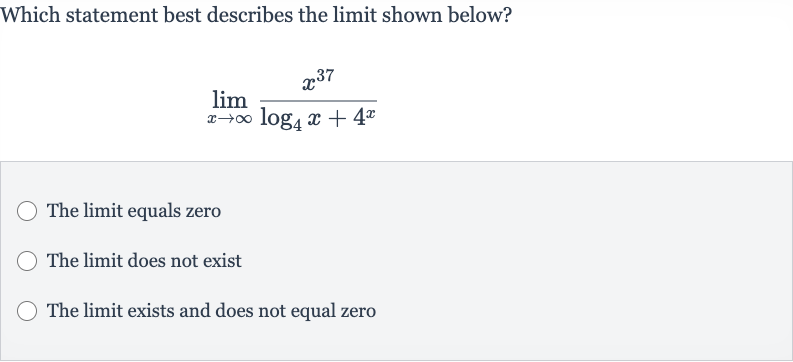Full solution
Q. Which statement best describes the limit shown below?The limit equals zeroThe limit does not existThe limit exists and does not equal zero
- Analyze Function Behavior: We need to analyze the behavior of the function as approaches infinity. To do this, we will compare the growth rates of the numerator and the denominator.
- Numerator Growth Rate: The numerator is a polynomial function of degree , which grows very quickly as becomes large.
- Denominator Comparison: The denominator is the sum of and . The logarithmic function grows slowly compared to the exponential function . Therefore, as approaches infinity, the term will dominate the denominator.
- Dominant Term: Since the exponential function grows much faster than the polynomial function , the denominator will increase much more rapidly than the numerator as approaches infinity.
- Approaching Infinity: As a result, the fraction will approach zero because the numerator becomes insignificant compared to the rapidly increasing denominator.
- Limit Statement: Therefore, the correct statement that describes the limit is: "The limit equals ."
More problems from Power rule
QuestionGet tutor help
QuestionGet tutor help
QuestionGet tutor help
QuestionGet tutor help
QuestionGet tutor help

